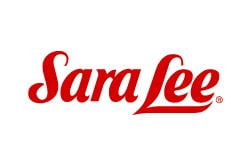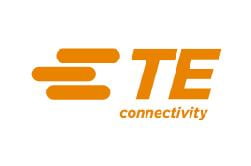Internal Controls / SOX Guidelines
“Tailored Solutions, On-Demand Resources, Assured Quality, Round-The-Clock Service.”
Plan for Future with EA’s Outsourced Internal Controls / SOX Guidelines
Ensure you are SOX-compliant and your internal controls are well-designed, implemented and monitored with Expertise Accelerated’s co-sourcing and outsourcing support services.
The 2002 Sarbanes Oxley Act (SOX) retains its technical relevance and regulatory significance as the need for reliable financial reporting grows in response to the ever-growing complexity of business transactions.
Section 404 of the SOX requires implementation of internal controls that ensure reliable financial reporting in public listed companies and some private companies while Section 302 holds the CEO and CFO responsible for the company’s financial reporting and all related controls, thus binding them to ensure their implementation and subsequent monitoring.
Any lapse in these controls leading to loss of reliability in the company’s financial reports can have serious implications for the CEO and the CFO.
It is therefore immensely important that strictest compliance with SOX 404 is ensured through the deployment of dedicated resources and the same are hired externally if not enough are available in-house.
Expertise Accelerated can leverage its global talent pool to assign you SOX compliance experts to make you SOX compliant at all times.
Get in Touch
Internal Controls / SOX Guidelines

Control Environment
- Integrity & Ethics
- Oversight and Responsibility
- Structure & Authority
- Commitment to Competence
- Enforce Responsibility

Risk Assessment
- Specifies Suitable Objectives
- Identifies and Analyses Risk
- Assesses Fraud Risk
- Analyze Significant Changes

Control Activities
- Develops Control Activities
- Develops Technology Controls
- Develops Policies & Procedures

Information & Communication
- Uses Relevant Information
- Communicates Internally
- Communicates Externally

Monitoring Process
- Conducts Evaluations
- Communicates Deficiencies
EA’s SOX Services for Assured Compliance
Since the Congress passed this Act in 2002 in response to the high-profile corporate scandal of Enron, Sarbanes Oxley or what is commonly referred to as SOX has remained a key regulatory instrument for corporate governance.
The Act primarily seeks to regulate the conduct of the corporate executives in favor of the companies to whom they owe a fiduciary duty, hence, protecting the interests of the shareholders, i.e., investors, and stakeholders at large through improved governance, transparency, control, and auditing.
As stated above, a core area of interest of these corporate regulations is the internal control environment, loosely referred to as the Internal Control SOX.
Section 302 and 404 are instrumental in terms of the Sarbanes Oxley Internal Audit regulations. Section 404 requires management to develop and monitor controls on the basis of which they can make the assertion as to the adequacy of these controls over financial reporting and the auditors can attest the same, while Section 302 requires the management to certify the financial reporting as well as disclosure controls on a quarterly basis.
Contrary to the general perception that Internal Control Consulting Services do not include SOX compliance, the fact is that SOX compliance is usually an integral part of such services.
As part of its Internal Control Services, EA provides staff augmentation solutions, delivering clients with professional teams to ensure seamless SOX compliance.
OUR PARTNERS




WHAT OUR CLIENTS HAVE TO SAY
FREQUENTLY ASKED QUESTIONS
Sarbanes-Oxley (SOX) requires an Internal Control Report that states management is responsible for an adequate internal control structure for their financial records. Any shortcomings must be reported up the chain as quickly as possible for transparency.
The SOX Sarbanes-Oxley (SOX) requires that the management produces an Internal Control Report, which iterates the management’s responsibility as regards the development and maintenance of an adequate and sufficient internal control structure for financial record purposes. Any shortcomings in this control structure need to be reported to the higher tiers of hierarcy at earliest.
The primary controls the management relies upon for risk mitigation or fraud prevention are referred to as the key internal controls, while secondary controls that serve as backup are referred to as the non-key controls.
“Internal controls can broadly be classified as preventive, detective and corrective.
Preventive internal controls are pre-emptive in nature, averting a fraud or error before it occurs. In other words, these control are meant to hunt the bug before it hunts you.
Detective controls are designed to intercept instances or incidents of fraud or error as they occur for a timely remedial action to be taken for their redressal.
Corrective internal control are meant to rectify any fraud or error detected.
From a system design perspective, the preemptive, detective and corrective internal controls are the first, second and last line of defense, respectively.”
